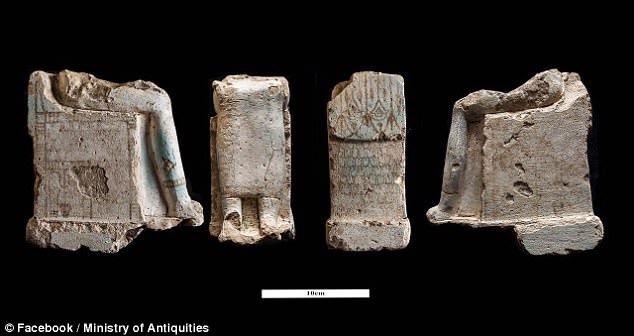Archaeologists find bust of Roman emperor in Egypt

Archaeologists find bust of Roman emperor in Egypt
In Egypt’s southern city of Aswan, archaeologists found a rare Roman bust.
According to the Antiquities Ministry, a team working to protect the Temple of Kom Ombo from groundwater discovered a sculpted head of Emperor Marcus Aurelius, which is a rare discovery for this location.
From 161 to 180 AD, Aurelius ruled, and his death is said to have marked the end of the Western Roman Empire.

In addition to the bust, archaeologists excavating a site a few hours north of Aswan discovered artifacts from a shrine to the god Osiris-Ptah-Neb, in the ancient temple Karnak.
The discoveries at Karnak, in the city of Luxor, include parts of a stone panel depicting a ram and a goose – symbols of the ancient Egyptian god Amun – on an offering table, with a winged sun-disk at the top.

The team also found the entrance to the shrine itself, with several columns and inner walls, along with the remains of a third chamber, foundation stones, and the shrine’s floor unearthed at the site.
According to Dr Ayman Ashmawy, Head of the Ancient Egyptian Antiquities Sector, this shrine for the god Osiris is one of the most important in the temple from that time, as indicated by its position on the southern side of the temple for the god Amun-Re.

The shrine also contains the names of Kings Taharka and Tanout Amun, revealing its links to the late 25th Dynasty; Tanout Amun was the last king of the 25th Dynasty, the experts note.
Excavations over the last few years have unearthed countless remarkable artefacts from ancient Egypt, which the country hopes will spur tourism to the area.
Egypt has suffered from political turmoil following the 2011 uprising.
Both Aswan and Luxor contain significant archaeological sites that have provided a stunning glimpse into life in the ancient cities.

The bust of Emperor Marcus Aurelius discovered in Aswan is particularly unusual, the experts say, as statues to this ruler are not common in the area.
The ancient head has remained largely intact over the years, and the wavy beard and hair can still clearly be seen.
Earlier this year, archaeologists announced the discovery of a partial statue depicting one of the most famous pharaohs in Aswan – Ramses II.
The head and chest were also discovered in the Temple of Kom Ombo during the ongoing efforts to protect the site from groundwater.